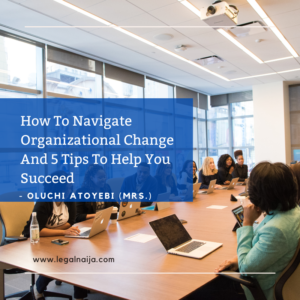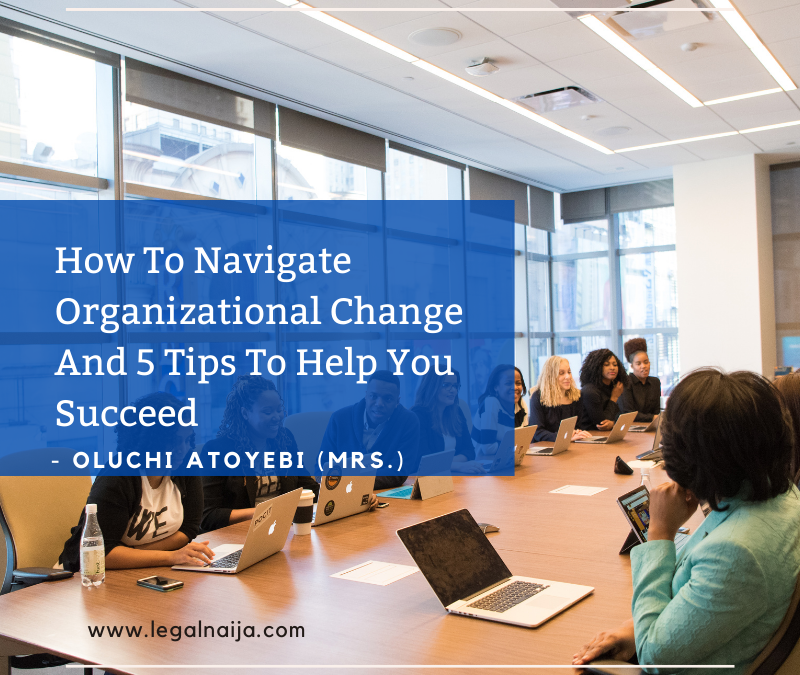
The overarching goal of change management is the successful implementation of new processes, products and business strategies while reducing the negative outcomes. Change management goes beyond project management and technical tasks and leverages on people. The business world is constantly needing to evolve. For instance, between December 2019 and now, businesses have had to review their strategy and adapt to the world of business during the COVID-19 pandemic. Change can be very difficult, and as such usually faces a lot of resistance. It is therefore important to develop a systematic response to change.
According to a 2015 McKinsey study on Transformational change, only 26% of transformation initiatives succeed. This is a mere 6% improvement when compared to the results from the same survey in 2012. At the root of it, the key to organizational change is consistent action. Transformation has to be supported closely with active implementation, and implementation can be measured in terms of outcomes. Every organization has to determine what progress looks like.
However, successful organizations tend to have these 5 things in common:
- The Senior Management team communicate openly, and across the organization about the transformation progress and milestones.
- Executive management constantly seeks staff buy-in.
- There is a dedicated team that manages the transformation.
- Transformational goals are adapted for employees at all levels of the organization and employees are held accountable through performance evaluations.
- Roles and responsibilities are clearly defined.
In the process of implementing organizational change, organizations should consider the following:
- Create a strategic vision and outline key initiatives
It is extremely important to create a strategic vision that guides the transformation exercise. When leaders are involved enough to create a uniform strategic vision, and outline strategic initiatives to help them achieve this vision, the potential for success is immense.
- Select Champions and lead by example
An organization is more likely to achieve success when it views change as a holistic process and selects champions to drive the identified change across all levels of the organization. When leaders model the behaviour they are asking employees to make, employees are more than 2 times likely to imitate this behaviour. However, in many organizations, there is a perception gap between senior management and low-mid-level management, as the Senior/Executive management does not always have the same perspective, context or limitations.
This is why a dual approach, through the selection of champions, possible from cross-functional teams will go a great way in the execution and implementation of transformational change.
- Create Quick wins and communicate
In order to keep the momentum going, it is advisable to create quick wins and constantly communicate the same across the organization. It is fairly common to get stuck in the planning phase of a transformation exercise. Creating and implementing quick wins fosters action and keeps employees engaged, while portraying the benefits of change, through the fulfillment of outcomes. Frequently communicating progress is an amazing way to build employee interest and encourage stakeholder feedback, which leads to an overall improvement in processes.
- Set clear expectations and track progress
What gets measured gets done, therefore tracking and measuring progress is essential. Change is the most common phenomenon in life and business, so organizations can increase their chances of success and reduce cost by tracking and monitoring the process of change. In addition to this, setting clear expectations helps to hold stakeholders accountable and frequently communicating progress is a great way to sustain employees’ interest and ownership.
- Capacity Building
To implement change, you must continuously build employee capacity. It is important for employees to be immersed in the change and develop the expertise to execute such change. Transformation starts with the people, before being actualized by stakeholders through the implementation of shared outcomes. Organizations should not only build capacity through training and seminars, but also through promoting a culture of risk taking, innovation, mentorship and support. By doing this, a company will not only achieve transformational change, but impact employees for life.
Written by:
Oluchi Atoyebi (Mrs.)


